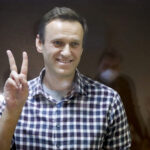

[embedded content]
Europe’s biggest gas groups are sounding the alarm over President Joe Biden’s pause on new liquefied natural gas exports, warning that the pause could dampen industrial activity, force factory closures, and erode trust between leaders in Brussels and Washington.
These groups said they feared supply shortages within the next few years, which would leave them with few, if any, attractive options, such as purchasing more expensive supplies from far-away Qatar, reconsidering their planned start date to implement a bloc-wide ban on Russian LNG, or even being forced to return to dirtier fossil fuels, such as coal, in the event of an emergency.
“The pause could potentially disrupt the global LNG market dynamics, impact the trust for U.S. exports, impacting European import strategies and supply chains,” Torben Brabo, the senior vice president of Gas Infrastructure Europe, told the Washington Examiner in an interview.
“The intricacies of this situation warrant careful consideration, as any disruptions in LNG supply could have ripple effects on energy security and pricing in Europe,” he said.
The biggest effects would be felt beginning in 2027. That’s when the European Union’s proposed ban on Russian LNG imports is set to come into force. But that’s also the time that most current EU contracts with U.S. LNG providers expire, Fred Hutchison, chief executive officer of the USLNG Association, told the Washington Examiner.
For context, the EU purchased roughly 4.89 million metric tons of Russian LNG in the first four months of 2024, according to data from S&P Global, relying on Moscow for 16% of its chilled natural gas, compared to 12% during the same period in 2023. That makes Russia its No. 2 supplier, behind the United States.
Without another supplier to fill this void, the cessation of Russian supplies would deepen Europe’s need for additional U.S. gas, which leaders fear may not be available to them depending on the length of the pause. The worry is that a lengthy pause could keep U.S. export terminals from being constructed in time, leaving Europe vulnerable at a time when demand growth from other parts of the world, such as Asia, is also expected to increase.
Phasing Russian gas out “is going to make life much more difficult for us,” James Watson, the secretary general of the trade association EuroGas, told the Washington Examiner in an interview about Europe’s supply situation.
Much will depend, he said, on how the U.S. responds.
“We don’t have a crystal ball. We don’t know the future,” Watson said of the need for U.S. supplies. “But when there is a supply squeeze, that is when you are likely to see price increases and the associated social negatives like factory closures, people not being able to pay their bills for heating.”
Supply status
Industry groups have used less gas in the two years following Russia’s Ukraine invasion, which sent gas futures in Europe soaring to an all-time high of $371 per megawatt hour, and forced leaders to order a series of conservation measures in order to avoid bloc-wide shortages.
European countries also began to invest heavily in new LNG projects in the U.S., as well as regasification terminals, storage units, and other infrastructure needed to import volumes of the chilled gas.
LNG import capacity in the bloc is slated to reach 406 billion cubic meters by the end of the decade as a result of these investments, according to a report from the Institution for Energy Economics and Financial Analysis, or IEEFA.
The U.S. became the world’s largest LNG exporter in 2023. The EU currently imports 51% of its LNG from the U.S., compared to 16% Russian supplies, 10% from Algeria, and 8% from Qatar, according to S&P Global.
And while the U.S. has pledged to supply the EU through at least 2030 with approximately 50 bcm annually of LNG, there are rising concerns about how these concerns square against expected post-2030 demand growth in Asia, which could tighten supplies and force European buyers back on the spot market.
The 50 bcm in U.S. supply also appears to be at odds with Europe’s expected gas consumption by the end of the decade, which the IEEFA forecasts will be at roughly 400 bcm.
Within the next three years, the U.S. has Golden Pass, Port Arthur, Plaquemines, and NextDecade LNG plants slated to come online, all of which are expected to help the U.S. meet demand from EU and Asian buyers, at least through 2027.
It’s “the years immediately after that” that the pause is expected to affect buyers, Hutchinson said.
All told, the five U.S. LNG export projects that are either seeking extension or new certification risk getting caught up in the pause — and that, officials warn, could have an outsize role in determining the supply situation in the EU.
CLICK HERE TO READ MORE FROM THE WASHINGTON EXAMINER
Barring real progress on decarbonization, or above-average gas demand reduction from the bloc, lobbyists and trade groups say they fear that Europe will be left in a tight spot, supply-wise, by the end of the decade.
The White House and the Department of Energy did not respond to the Washington Examiner’s request for comment.







